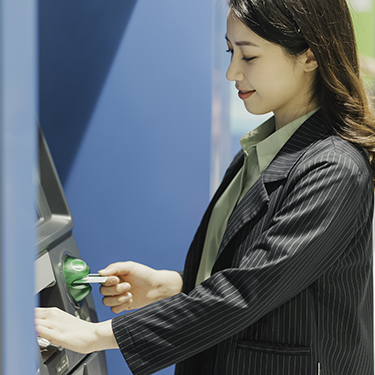IT's Tips for Account Security

In 2023, fraud cost U.S. consumers more than $10 billion, a 14% increase over reported losses in 2022.1 However, research shows that the more aware people are of specific scams, they’re less likely to fall victim. Texell’s IT team gathered these tips for members to better protect your accounts.
Don’t Take the Bait
Scammers often use phishing techniques to hack accounts. In these scams, fraudsters pose as legitimate businesses to trick victims into giving them personal information. If you receive unexpected email, text, call, or physical mail from a company, don’t react right away. Stop to consider if you were expecting a message. If you’re unsure, don’t interact with the message, as the contents can be harmful. Clicking a link or filling out a form hands your data over to these criminals.
Phishing scams often include unusual requests, like reward offers or urgent messages. The scammer’s goal is that you act immediately. Examine it closely for typos, strange capitalization, inconsistency, and incoherent language. Any of these are red flags that it didn’t come from a legitimate source.
Do not open a text, click a link, or scan a QR code if it isn’t from a familiar source or you’re not sure where it’s taking you. Do not provide any information unless you initiated the contact. If you’re concerned that the message is fake, visit the company’s website to find the correct contact information.
Keep Accounts Clean
To keep accounts safe from fraudsters, create unique passwords of at least 16 characters and a mix of letters, numbers, and special characters.
Don’t use personal information when creating passwords, like names of children or pets, birthdays, or addresses. Scammers can find this type of information on social media sites, making your passwords more vulnerable.
To keep track of unique passwords easier, IT suggests using a password manager, like 1Password. Password managers store credentials for all accounts so that you only need to remember one password to open the password manager. Once you have unique passwords, don’t share them with family or friends through email, text, or other unsecure channels. Instead, add those you trust to your password manager account.
While you’re setting up unique passwords, it’s also a good time to review all accounts. Deactivate and delete accounts that you no longer use, especially if it accesses your financial accounts. For accounts that you plan to keep, make sure your personal contact information is up to date so that you can verify password resets with two-factor authentication (2FA).
Layer Up
Create as many roadblocks or protective barriers as possible by setting up 2FA on all accounts. However, using email for 2FA provides more security than text, as SIM swap scams target text messages. In these scams, the criminals trick cell phone providers into switching service to a SIM card they control, hijacking a phone number.
Avoid using public Wi-Fi as hackers can sometimes monitor traffic for passwords or credit card numbers. Hackers also launch malware attacks on your devices using unsecured Wi-Fi networks. Even those that require a password are at risk if the password is easily accessible. If you need to use public Wi-Fi, consider connecting to a virtual private network (VPN) to encrypt your data. Consider turning on a software firewall on your device, such as Windows firewall, to lock down any weaknesses on your machine that could be exploited.
Keep Your Guard Up
Become the defender of your information by keeping software and devices updated. Developers address security breaches and known weaknesses with every update, so install them whenever new ones are available. Don’t make purchases from unsecured sites (those starting with http:// instead of https://).
Stay alerted of cybersecurity breaches from the Cybersecurity & Infrastructure Security Agency (CISA). Lock your device when not in use and lock physical data in a safe place. Don’t discard an old device without wiping data from it first.
Texell members can monitor accounts through Digital Banking, and IT recommends monitoring online accounts daily. You can set up alerts for certain triggers, like a withdrawal of more than $100 or low balances. Card controls allow you to turn cards off when you think fraudulent activity occurred.
Besides online security, keep your guard up when shopping at stores and using ATMs. Don’t use ATMs in dark, isolated locations. Read our article, “Protect Yourself at the ATM” to learn more about ATM safety.
Watch your card when you’re at restaurants or stores and check your receipts carefully. Make sure any digital transactions return to the home screen so that the transaction is complete. Report lost or stolen cards immediately to prevent any fraudulent charges.
Be Proactive
The best defense is a good offense, and the saying is true with protecting your information. Don’t share personal details on social media or limit the audience to share only with friends or family. The more personal details that you post, the more vulnerable you are to being a victim of cybercriminals. To further protect accounts, provide fake answers to security questions so that a scammer can’t find the answers by scouring social media or public information files. Personal details such as your mother’s maiden name, or which high school you attended, are easy for attackers to find and those answers could be used to reset your password.
Don’t download apps from untrusted sources and review closely what permissions the app is requesting. For instance, a game app shouldn’t need access to your contacts. Be cautious of using third-party apps that ask you to log in to social media accounts. This gives the app access to your social media account which may include privileges such as reading your DMs or posting as you. Use 2FA on social media accounts to prevent hackers from gaining control.
After you’ve set barriers to protect your information, back-up your data on encrypted hard drives. IT recommends performing back-ups often, at least once a week. Use trusted antivirus software, like Malwarebytes or Trend Micro, to scan your systems. Keep the software updated to protect your data from the latest threats.
To learn more about fraud prevention and scams, visit Blog.Texell.org/fraud-prevention. If you have questions about your Texell account, contact Member Services or call or text 254.773.1604.
1 As Nationwide Fraud Losses Top $10 Billion in 2023, FTC Steps Up Efforts to Protect the Public (link to https://www.ftc.gov/news-events/news/press-releases/2024/02/nationwide-fraud-losses-top-10-billion-2023-ftc-steps-efforts-protect-public).
If you wish to comment on this article or have an idea for a topic we should cover, we want to hear from you! Email us at editor@texell.org.







